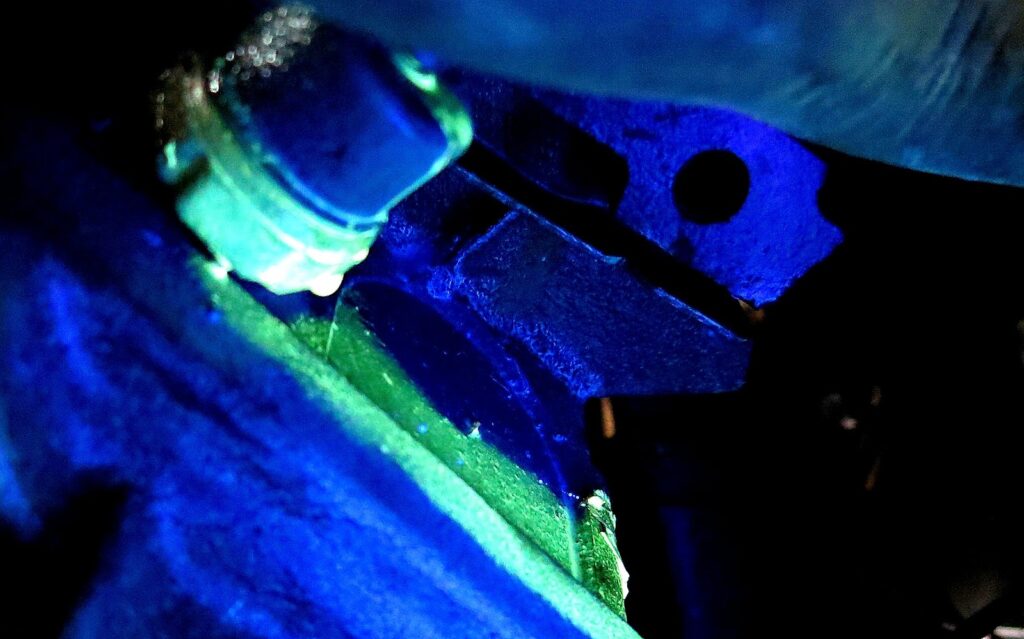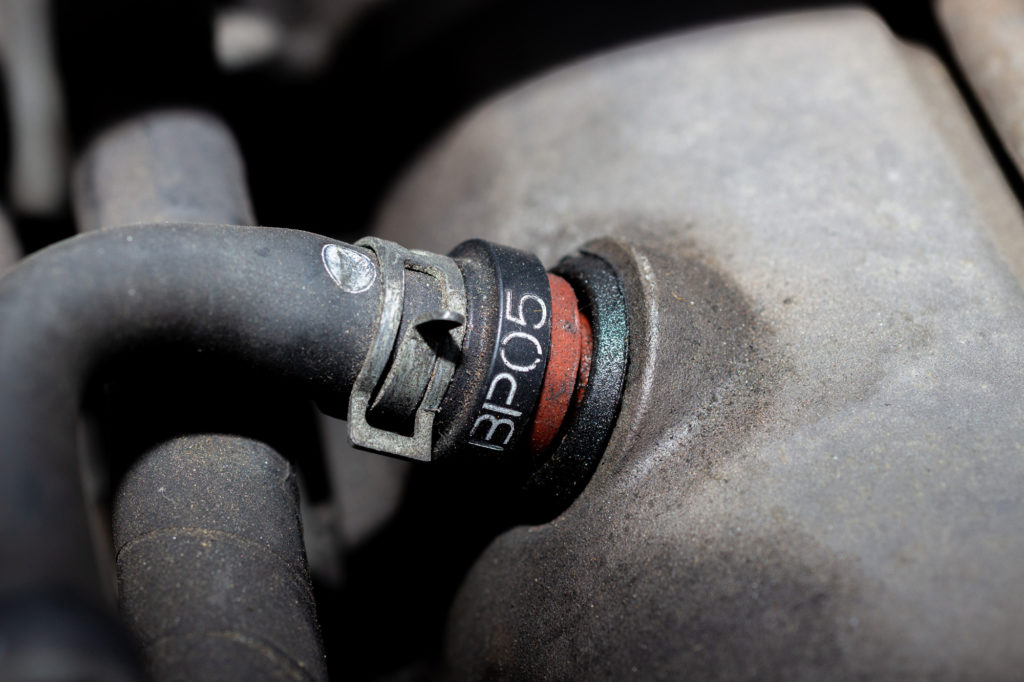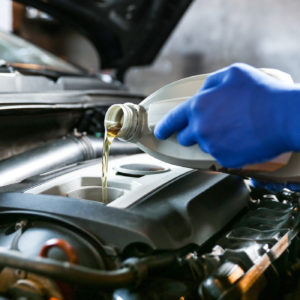Smelling something strange inside your car cabin can be alarming, especially if it smells like burning oil. It could indicate various problems, from something as minor as an oil leak to an issue serious enough to make it dangerous to drive your vehicle. Most especially, an oil leak can cause an engine fire, which basically puts the car down and if it gets out of control, it can destroy the entire vehicle. So don’t ignore the smell and identify what’s causing it immediately.
Why Does My Car Smell Like Burning Oil?
Different problems can result in a burning oil smell coming from a car. If you run your A/C on recirc or max all the time, you probably won’t smell the oil while driving, but you may see some white smoke under the hood.
Oil Leaks
You won’t smell oil unless it’s leaking out of the engine and dripping on the exhaust. You might smell oil if the engine is burning it, but that usually goes out the tailpipe to be smelled behind those behind you.
Make sure to address oil leaks immediately because low engine oil levels can affect your engine’s mechanical health. Oil lubricates the metal parts of your engine. Oil molecules create a liquid barrier between metal parts like the crankshaft and its connecting rod bearings and between the crankshaft’s main bearings in which it spins on its axis. Everybody knows how an engine can be destroyed when enough oil leaves the crankcase, whether it’s burned or simply leaks out.
How to Find Oil Leaks
You can find most oil leaks at the bottom of the engine due to gravity. Also, the oil naturally attracts dirt, so look for dirty or greasy areas surrounding your gasket seams and seals.
But just because you see oil at the lowest point on the engine doesn’t mean that’s where the oil is leaking out. Most shops add some special dye to the oil, drive the car, and then use a black light to see where the dye appears.



Another method used by some shops is to spray the suspected oil leak area with cheap white foot powder and then see where the oil first appears.
There are pressure leaks, such as the ones shown in the photos, as well as at external seals where a spinning shaft exits the engine to spin a gear or pulley (camshaft, crankshaft, etc.). There are also splash oil leaks, such as those that come from valve covers.
How to Fix an Oil Leak
Once you find the leak, you can either fix it on your own or let an expert deal with it.
If you see oil spots on your driveway, make sure you check your oil regularly. Oil won’t always drip on the exhaust and produce smoke and a smell. But again, an engine that’s low on oil is living on borrowed time, so keep the oil checked and topped off until you can get something done about the leak.
To slow down minor leaks, mechanics use a crankcase oil additive, which softens or expands rubber seals to prevent oil leakage. But if your vehicle has a major leak that requires extensive repairs or part replacements, it’s best to let a professional handle the problem.
Frozen or Clogged PCV System
When the weather is so cold that it freezes your ride’s positive crankcase ventilation (PCV) valve, normal blowby gasses can push some of the oil out of the dipstick tube or around gaskets that might not leak when the PCV is working right.
But unless you live in a place where it gets very cold, you probably won’t have a frozen PCV valve. The PCV valve can freeze because the blowby gasses in the crankcase always contain a bit of water. But typically, PCV valves are located in a hot part of the engine and don’t usually freeze.

What would be more common in any climate would be a clogged PCV system, which can cause the same issue. But if the PCV valve is all that’s clogged, the oil steam will simply exit the crankcase through the crankcase filter or will go into the air intake tube where modern PCV systems get the air they pull through the crankcase. If the crankcase filter is oily and wet or you have oil in the air cleaner, a clogged PCV system is usually the reason unless the engine is producing so much blowby the PCV system can’t handle it.
The PCV valve should have a very strong vacuum if you remove the hose from the valve with the engine running. If it doesn’t, the hose itself or its vacuum source may be clogged. If both the PCV valve and the PCV closure system (crankcase filter or closure hose connected to the air inlet tube) are clogged, crankcase pressure will create leaks all over the engine, so be aware of that if you have oil leaks from lots of different places at once.
The PCV valve should have a very strong vacuum if you remove the hose from the valve with the engine running. If it doesn’t, the hose itself or its vacuum source may be clogged.
– Richard McCuistian, ASE Certified Master Automobile Technician
Is It Safe to Drive a Car With a Burning Oil Smell?
No, it’s not. Although it’s technically possible to drive your car even if you notice a burning smell, it’s highly recommended that you don’t.
A burning smell in a car means something isn’t right, and it could cause problems that would make it dangerous to drive. So it’s best to take your daily driver to an auto repair shop near you once you notice this symptom.
How Much Will It Cost to Fix a Burning Oil Smell?
It depends on what’s causing the issue. An oil leak repair, for example, can range anywhere between $100 and $2000. The wide range is because there can be many possible sources of the leak.
If the leak is caused by a worn oil drain plug gasket, repairing it might set you back around $35. However, if the oil span is the problem, expect to spend anywhere between $100 and $500. You’ll also have to consider labor costs, taxes, and other related repairs.

Other Telltalle Car Smells
Aside from a burning oil smell, other unusual odors could also indicate trouble for your vehicle. Here are some of them:
Sweet Odor
If you notice a sweet smell (like maple syrup), there’s a good chance you’re dealing with coolant leaks. Engine coolant has a sweet smell because it contains ethylene glycol. Coolant leaks can cause the engine to overheat, so if you suspect your car has them, it’s best to take it to a mechanic for a diagnosis.

Burnt Plastic Smell
A burnt plastic smell can mean that your vehicle has an electrical issue. However, you can’t diagnose the problem based solely on a smell, so take your vehicle to an auto repair shop for a checkup.
Moreover, note that the smell can also be coming from a different source, like a lit cigarette. So check your surroundings as well.
Musty Odor from the A/C
If you notice a strong, musty odor when you turn on your vehicle’s A/C, there might be mold and mildew in the evaporator. You can try spraying odor-killing aerosols to solve the problem, but this doesn’t always work. If the odor persists, you might need to seek the assistance of a professional.
Aside from dashboard warning lights and on-board diagnostic tools, smells are also a good way to know if something is wrong with your car. So always pay attention to how things smell while driving.
Any information provided on this Website is for informational purposes only and is not intended to replace consultation with a professional mechanic. The accuracy and timeliness of the information may change from the time of publication.






























